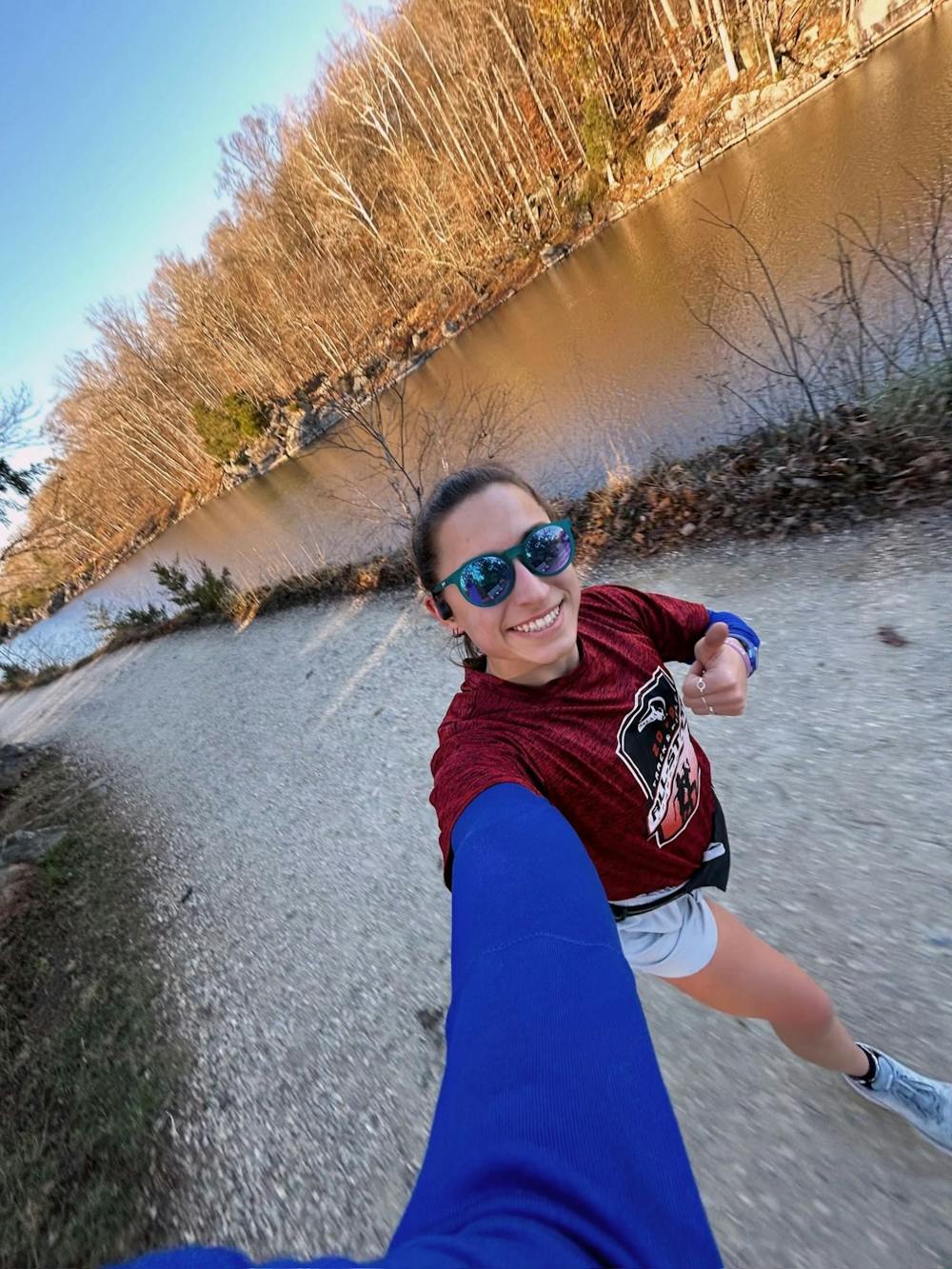Escapism can be found everywhere; however, it doesn’t seem to be a main topic of conversation in the world of sports. It is overwhelming to think that in almost everything we do, we can escape within the activity itself into some imaginative state. Depending on the person, escapism can be either positive, negative, or both, depending on how often and why they are choosing to escape their reality. According to American University runner Ana Keene, escapism can be productive when one’s intentions align with good reasoning.
Over winter break, I sat down with Keene while she reflected on her running career, offering a beautiful take on the presence of escapism in the sport of running.
“I used to see running as a way to escape my everyday stress and problems. But what I found was that once I finished my workout, the stress and problems were right where I left them,” Keene shared.
It is evident that running is one of the most addicting forms of physical activity as it releases natural endorphins throughout, known as the “runner’s high.” This rush of endorphins is often described as an overwhelming feeling of relief and euphoria that follows intense exercise. This feeling typically motivates runners to push themselves past what they should to chase this rush. Yes, pushing one’s self past their limit in sports is often romanticized as dedication; however, there is a thin line between dedication and burn out, especially in the world of running.
“Extreme physical activity can help a lot of people in hard times, but only to some extent,” added Keene.
The First Team All-Patriot League runner started her career in a fifth grade road race in Needham, Massachusetts. She initially loved the sport because she saw it as a space to connect with friends. It was not until her sophomore year of high school that she realized she was good enough to continue her career into college.
After arriving at AU her freshman year, Keene immediately could feel the difference in the intensity of practice and competition.
“The workouts were so hard, but this is what would make me go to my happy place,” she said.
“The happy place” is typically used to describe one’s own envisioned calm space. In sports, athletes are told to intentionally go to this space when they are under extreme pressure so that they can perform to the best of their ability.
Unfortunately, this “happy place” may fall by the wayside for a lot of athletes at the collegiate and professional levels; this might be because some lose sight of their intentions. As a college athlete myself, I can say I’ve lost my “happy place” once or twice. You can find yourself in a maze trying to revisit it, but it can be found with reflection, self-honesty and redefining your why. Trust that.
“I just wanted to see how far I could push myself,” Keene said. “The daily runs just weren’t enough for me. I began going on two runs a day, at too fast of a speed. It turned into a beast of exercise addiction. I saw my success which validated me. In that, however, I lost touch and sight of healthy intentions, leaving myself out to dry.”
During the spring season of her sophomore year, Keene was overtraining and under-fueling. After placing sixth that season at the Patriot League Championship, her body had enough, and she was no longer cleared to participate in post season training.
“I knew that I was running to escape, but it wasn’t in a healthy or sustainable way,” Keene said.
After ongoing therapy sessions and multiple rounds of months-long treatment, Keene still found herself returning to old habits conflicting with her body’s recovery, leading her to a cycle of being cleared and uncleared by athletic trainers.
Keene said that it wasn’t until she hit rock bottom that she pulled herself together. With help from family and friends and her own individual will-power, she managed to get herself back on track. She fully committed herself to her recovery, educating herself on the importance of both rest, recovery and mental health.
“I had to sit still and take time to heal. I took an entire semester off from college,” Keene said. During this time, she redefined her intentions behind why she is a runner and balanced that with love and compassion for herself.
This past fall, Keene was accepted into a master’s program to compete in her fifth year at AU, but has mindfully chosen to close the chapter of her running career. She is beginning her new journey, applying to medical schools and planning to become a medical assistant in the near future.
During this transition, Keene has involved herself in The Hidden Opponent, a nationwide unofficial chapter on college campuses that focuses on breaking the stigma of mental health in athletics. With that, Keene urges her fellow AU athletes to seek the proper support, whether it's through AU’s Counseling Center, mental health groups in the department, the new sports psychologist or simply one another.
“It hasn’t been a linear path for me, and it never will be,” Keene said. “Just because I have learned to carry it well, doesn’t mean it’s not heavy. I still struggle today, but I have been able to equip myself with therapy and a dietician that help me stay connected to myself and my why. My advice for runners is to treat yourself well and listen to your body. Also, don’t lose sight of your intentions and the level to which you escape within your sport. After all, you will never truly overcome anything if you are always running from it.”
This story was edited by Liah Argiropoulos, Delaney Hoke and Nina Heller. Copy editing by Isabelle Kravis, Natasha LaChac, Sophia Rocha and Sophie Myers.





